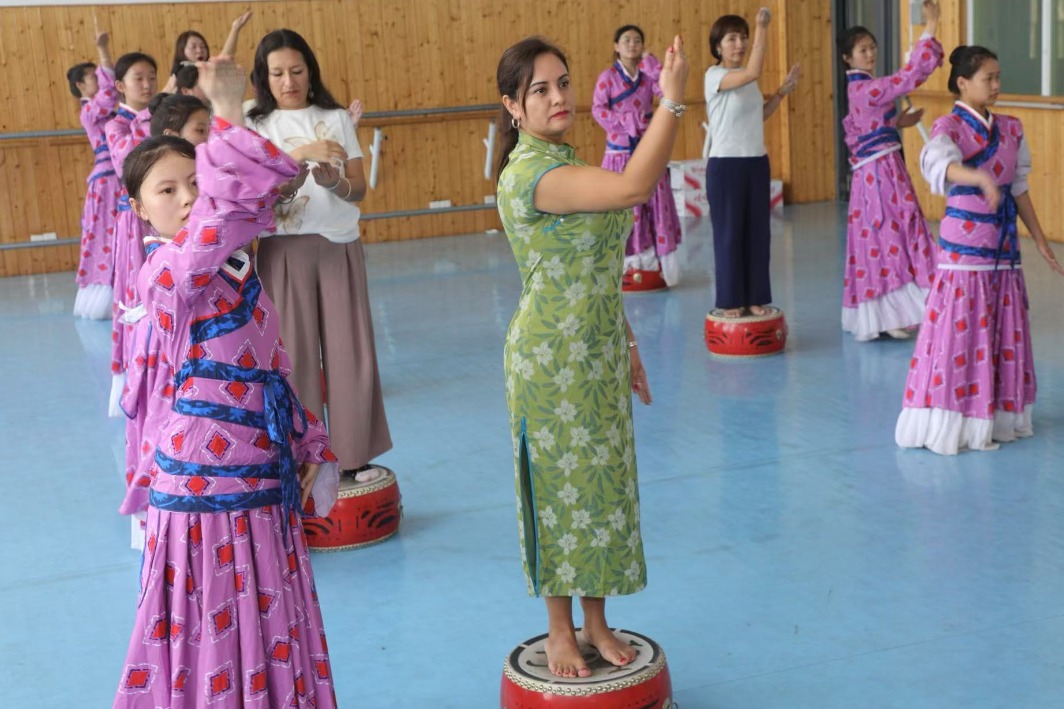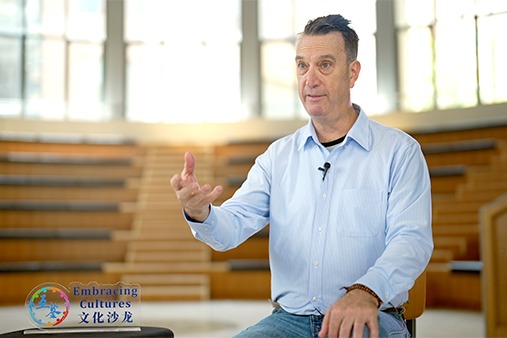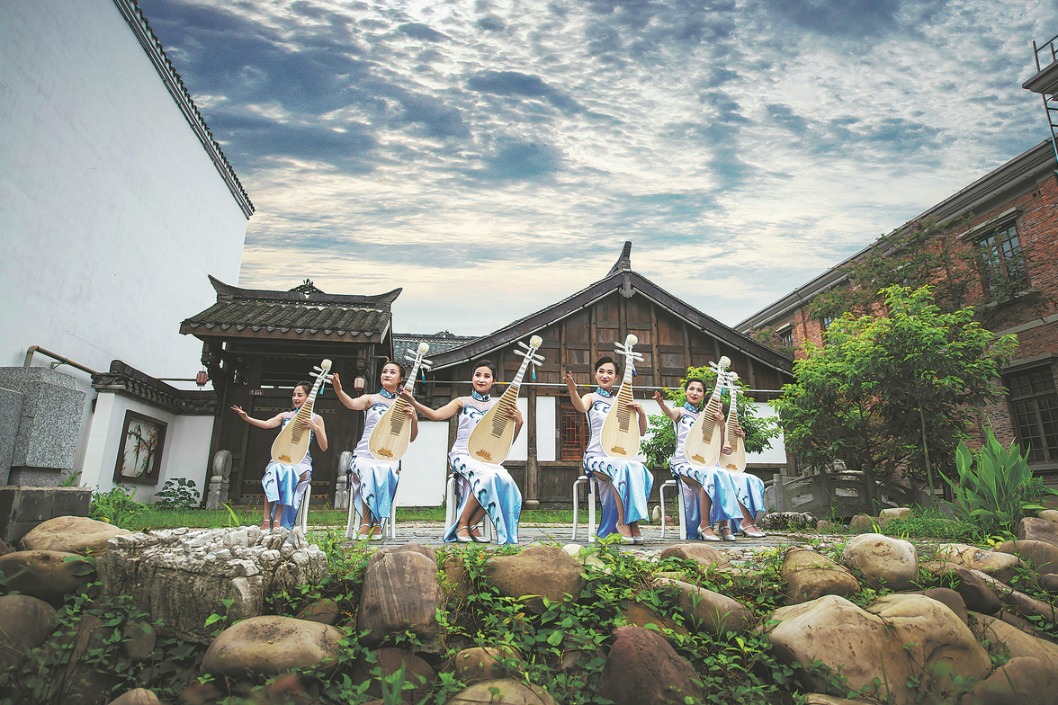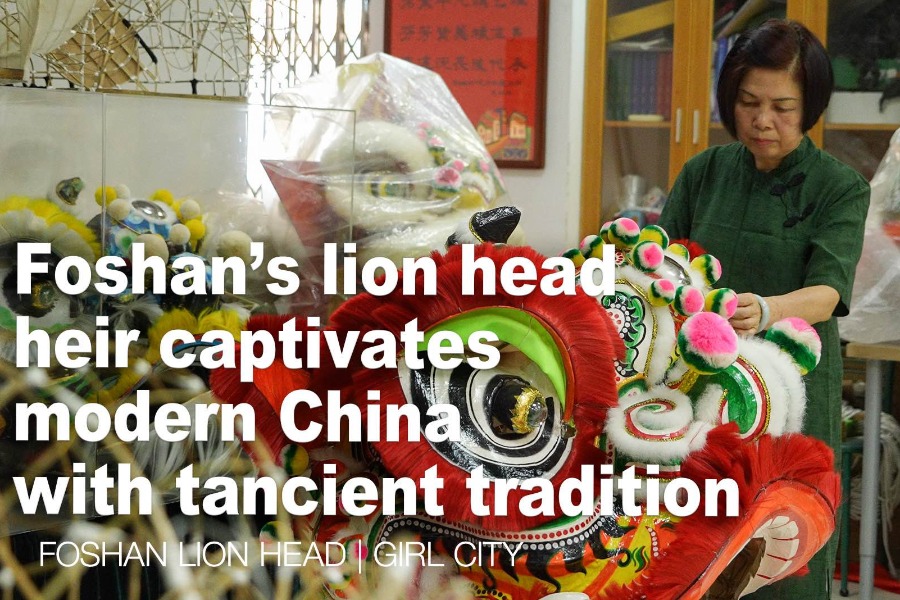Ancient beliefs shape visions of the future

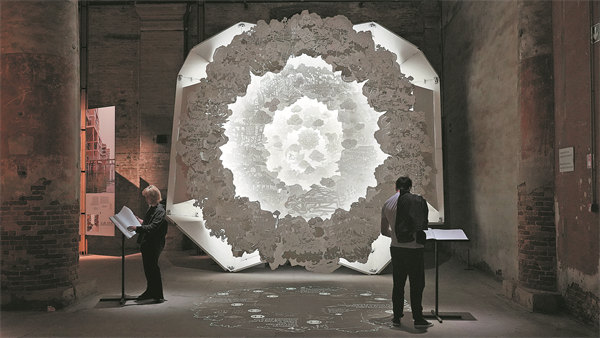
At Venice Biennale, architects offer a poetic interpretation of nature, spirit, and circular design for a changing world, Deng Zhangyu reports.
At the 2025 Venice Architecture Biennale, a mesmerizing installation featuring a hanging green dome at the China Pavilion has captivated global audiences.
Titled Vault of Heaven, the creation invites visitors to stand beneath it and watch as it slowly rotates, projecting a visual tapestry of birds, fish, deer, and rabbits, symbols rooted in traditional Chinese culture that reflect humanity's connection with the cosmos.
Its creator, Wang Zigeng, recalls being frequently asked about the stories illustrated within the dome when the pavilion opened in May. The installation's rotating layers immerse visitors in a dynamic representation of the Chinese philosophical worldview.
The green dome is designed like a caisson ceiling, or zaojing in Chinese, a decorative architectural feature found in traditional Chinese buildings, often located on the ceilings of ceremonial halls, symbolizing a link between heaven and earth.
It also uses bamboo-weaving craft of traditional Chinese lanterns to build its framework.
"This installation shows the unique Chinese ideas about the relationship between humans and nature, the desire for harmony, the continuous cycle of life," says Wang, founder of Beijing-based PILLS Architects.
Wang notes that many installations exhibited at the China Pavilion, which incorporate Eastern philosophical thought and embody unique characteristics of Chinese culture, are very popular among visitors at this architectural exhibition.
Many of the works exhibited there draw inspiration from traditional culture, such as the installation 12 Rhythms in Liangzhu, which is inspired by the Liangzhu culture, a Neolithic culture that existed in the Yangtze River Delta region of China more than 5,000 years ago and is known for its sophisticated jade carving.
Another standout is the Dunhuang Constellation by architects Zhang Jiyuan and Bu Xiaojun, inspired by the dome of Cave 285 at the Mogao Caves in Dunhuang, Gansu province, where one of China's finest Buddhist arts is housed.
The dome of Cave 285 can be considered a miniature cosmic civilization: the Sun God and Moon God from Sogdiana, Brahma and Ganesha from India, and Fuxi and mythical birds from China come together to create a spiritual star map that transcends time and space through flowing lines and vibrant colors.
These elements have been crafted into a 12-meter three-dimensional spatial structure, recreating an otherworldly vision of the universe.
Architect Ma Yansong, also the chief curator of the China Pavilion, says that many of the works on display are by young Chinese architects.























